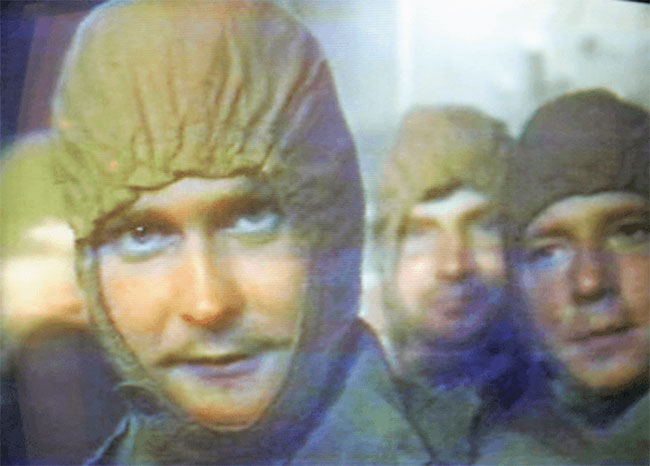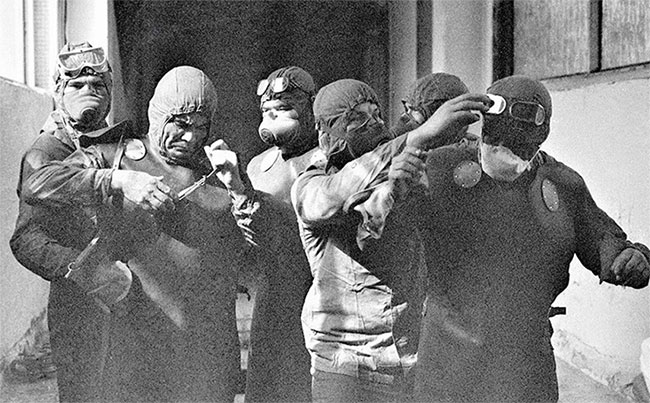Many people are aware of the disaster that occurred on April 25, 1986, at the Chernobyl nuclear power plant in Pripyat, Ukraine. However, not everyone knows about the individuals who volunteered to prevent a second explosion that could have been much larger.
A Greater Disaster Looming
Ten days after the initial explosion, the engineers on site became aware of a new, much greater threat. The first explosion had damaged the plant’s water cooling system, causing a large pool to form beneath the melting nuclear core. If the nuclear core reached that water pool, it would trigger a steam explosion.
Experts analyzed the situation and suggested that the explosion could have a yield of 5 megatons. However, the issue was not that simple—all the steam released would scatter radioactive materials into the atmosphere, eventually spreading across Europe and Russia. Soviet physicist Vassili Nesterenko remarked that such an explosion would render Europe uninhabitable.

Brave workers volunteered for the suicide mission. (Source: historyofyesterday.com).
Brave Workers
To prevent this catastrophe, the water from the purification system had to be manually shut off by turning a valve located in a compartment beneath the melting nuclear core. The danger was that this room was filled with water that had extremely high radiation levels. The first firefighting team that arrived at the scene on April 25, when the explosion occurred, had all died by the tenth day, as they had only worked near the exploded core.
Three of the power plant workers volunteered for a mission that was understood to be a suicide mission. They knew that someone had to do it, and it was their duty as plant workers. They were warned that it was highly likely they would die in the compartment due to the extreme radiation levels.
The brave workers were: Alexei Ananenko, Valeri Bezpalov, and Boris Baranov. All three volunteered for this suicide mission and were asked beforehand if they wanted to change their minds before entering “the realm of death.” Ananenko was the most crucial, as he was the only one on duty who knew the exact location of the valve. Despite being equipped with the best possible radiation protection gear, the chances of survival for these three heroes were slim.
All of the volunteers were provided with flashlights for the mission and were promised that in case they died, the government would take care of their families because they were heroes. Firefighters attempted to pump some water out before the heroes entered, so the water only reached their knees. However, finding that valve in a corridor filled with pipes and other similar valves was like searching for a needle in a haystack.
They were also under pressure from time, as the longer they stayed down there, the shorter their lifespan became, and the lesser their chances of survival. Ananenko mentioned in an interview that it was miraculous they found the valve in time, as many pipes had shifted due to the explosion. After successfully closing the water valve, they exited and were overjoyed to see the sun. The heroes were taken to a decontamination room.
These individuals became heroes not only because they saved Chernobyl from a worse explosion but also for all of Europe. If the steam explosion had occurred, it would have released radiation at least 400 times greater than the atomic bomb dropped on Hiroshima (Japan) during World War II.
What Happened to the Heroes?
While researching these three heroes, the author was surprised to find a lot of inaccurate information written about them. Most magazines and articles claimed they died shortly after the mission. Some stated they turned the valve, but no one survived, and all died immediately in the chamber beneath the melting nuclear core.
The truth can be found in the book “Chernobyl 01:23:40” by Andrew Leatherbarrow, published in 2016. When writing this book, the author conducted extensive research and even sought out the three heroes. He was genuinely surprised to discover that they lived for many years after their suicide mission.

Fearlessly sacrificing themselves, the “suicide squad” saved Europe. (Source: historyofyesterday.com)
Boris Baranov was the first of the three to die in 2005 from a heart attack. It is unclear whether the radiation he was exposed to during the mission was related to his heart attack, but it likely was not, as many years had passed. In 2015, Leatherbarrow noted that Valeri Bezpalov was healthy and still working in the nuclear industry.
The latest update on Alexei Ananenko was in early 2021 when he was interviewed about his sacrifice. Ananenko was also publicly honored in Ukraine in the summer of 2019 when he was awarded the Hero of Ukraine medal by the new president, Volodymyr Zelensky, for the sacrifice and bravery he displayed in 1986.
Despite what experts had said many years ago about the health impacts on the three men, they all aged normally and did not develop additional limbs. Some suggest that due to their many years of working in a nuclear power plant, they may have developed some form of immunity to radiation that helped them survive that day.
Much like the characters in the film “Suicide Squad,” despite the risks of the mission, they survived. Regardless, future generations must pay tribute to these heroes for saving countless lives and the future of Europe.
The Soviet Union Attempted to Conceal the Scale of the Chernobyl Disaster
More than a week after the Chernobyl nuclear power plant disaster, on May 4, 1986, 1,882 people were injured and required hospitalization. The following day, according to the publication “Chernobyl: 20 Years On” by Chris Busby and Alexey Yablokov, the total number of patients rose to 2,757. A day later, 3,454 people sought medical treatment. However, many of them mysteriously “recovered.” The reason for their rapid “recovery” was revealed when referring to Protocol No. 9 dated May 8, 1986, which was stamped “Confidential.”
According to author Michael Fishkin, this process involved new radiation exposure standards established by the Soviet Ministry of Health—new standards that exceeded previous parameters by tenfold. Notably, in some cases, the criteria approved by the Ministry of Health allowed increases of up to… 50 times. Additionally, when determining new exposure standards for citizens to nuclear radiation, no consideration was given to pregnant women or children.
According to Alla Yaroshinskaya and many other researchers, the changes in radiation exposure limits were made because authorities wanted to conceal the scale of the Chernobyl tragedy. The authorities were indeed doing everything possible to prevent the spread of information regarding the actual number of victims and other facts related to the nuclear power plant accident to avoid panic—something that would certainly create many problems if people knew the truth.


















































